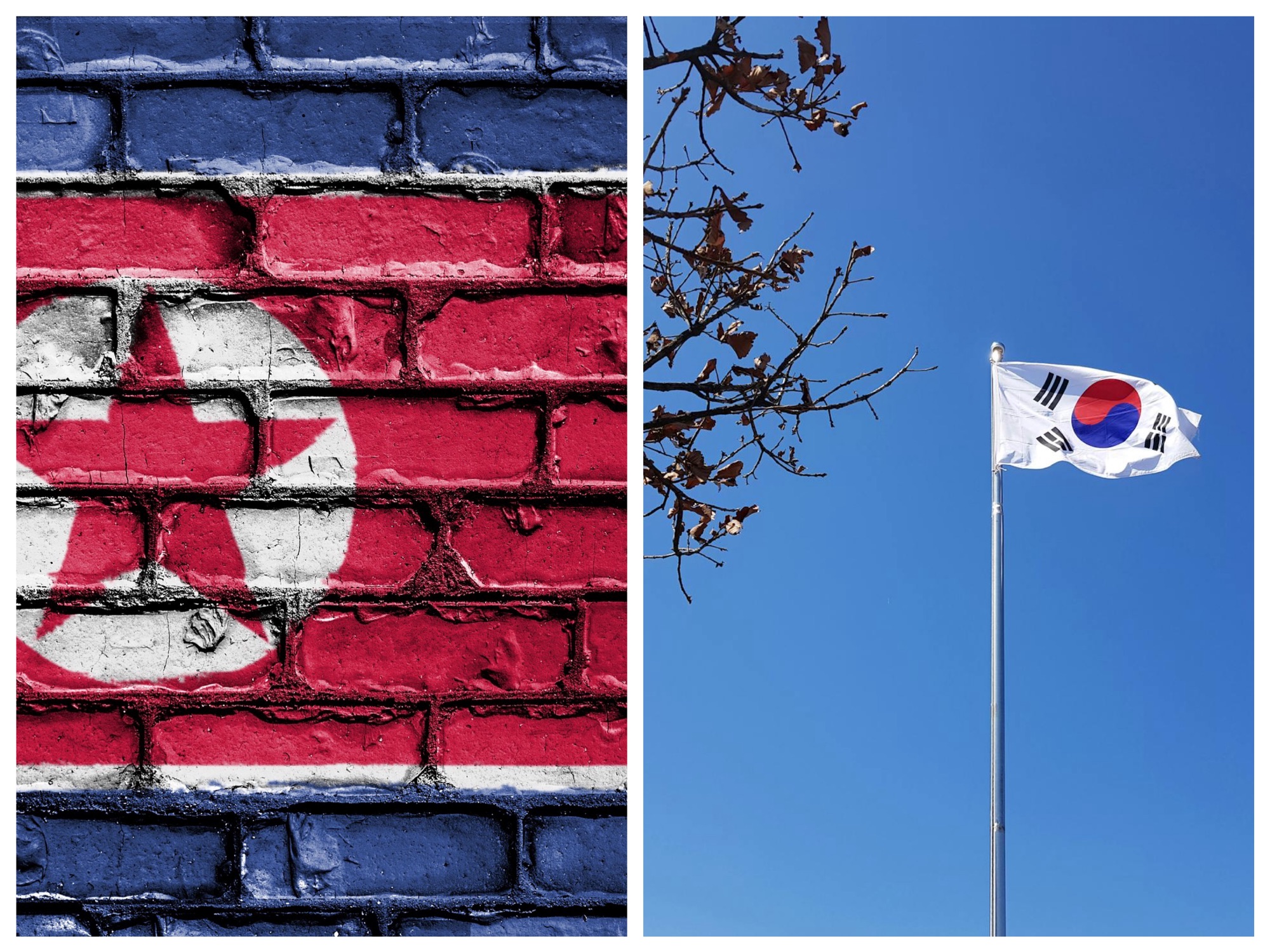The division of the Korean Peninsula into North Korea and South Korea is one of the most enduring and deeply entrenched conflicts in modern history. Stemming from the geopolitical rivalry of the Cold War, this division has grown into a complex mix of ideological opposition, military hostility, and starkly contrasting political systems. The Korean conflict has led to one of the most militarized borders in the world, frequent military provocations, and an ongoing state of war, as a formal peace treaty was never signed. Understanding why North Korea and South Korea hate each other requires exploring their shared history, the ideological divide, and the dynamics of power that continue to shape their relationship.
The Historical Context
1. Japanese Occupation and the Birth of Two Koreas
The roots of the Korean division trace back to the Japanese occupation of Korea (1910–1945). When Japan was defeated in World War II, Korea was liberated, but instead of becoming a unified state, the peninsula was split into two zones of occupation along the 38th parallel. The Soviet Union controlled the northern half, while the United States took control of the south. This division quickly turned into the establishment of two rival states—Kim Il-sung’s communist regime in the north and Syngman Rhee’s anti-communist government in the south—each claiming to be the legitimate government of all Korea.
2. The Korean War (1950–1953): The Birth of Hostility
The Korean War (1950–1953) was a direct consequence of the ideological clash between North and South Korea. North Korea, backed by China and the Soviet Union, invaded South Korea in 1950, aiming to reunify the peninsula under communist rule. The United States and its allies intervened to defend South Korea, leading to a brutal and bloody conflict that claimed millions of lives. The war ended in an armistice rather than a peace treaty, leaving the two Koreas technically still at war. The Demilitarized Zone (DMZ), which separates the two countries, remains one of the most fortified borders in the world, symbolizing the deep hostility and unresolved tensions.
Ideological and Political Differences
1. Communism vs. Capitalism
The fundamental ideological difference between North Korea and South Korea is at the heart of their enmity. North Korea, officially known as the Democratic People’s Republic of Korea (DPRK), is a totalitarian state under the Kim family dynasty, based on a rigid form of communism and the Juche ideology, which emphasizes self-reliance and absolute loyalty to the state. In contrast, South Korea, or the Republic of Korea (ROK), has developed into a vibrant capitalist democracy, with a flourishing economy and a society built on individual freedoms. This ideological divide has grown starker over the decades, with North Korea viewing South Korea as a puppet of the United States and a symbol of capitalist decadence, while South Korea sees the North as an oppressive regime responsible for the suffering of its people.
2. Propaganda and State-Controlled Narratives
Both Koreas use propaganda to reinforce their respective narratives of the other as an enemy. In North Korea, state-controlled media constantly demonizes South Korea and the United States, presenting the South as a land of corruption, inequality, and subjugation by foreign powers. This narrative serves to legitimize the North Korean regime’s policies and maintain internal cohesion. In South Korea, the government has historically portrayed North Korea as a brutal dictatorship that threatens regional peace and stability. While there is more diversity of opinion in South Korean media, anti-North sentiment remains strong, especially given the North’s frequent military provocations.
Military Provocations and Hostilities
1. Border Incidents and Escalations
The Korean Peninsula is marked by frequent military skirmishes and provocations, often initiated by North Korea. The DMZ and the maritime border in the Yellow Sea, known as the Northern Limit Line (NLL), have been sites of numerous deadly confrontations. Incidents like the sinking of the South Korean warship Cheonan in 2010, which killed 46 sailors, and the shelling of Yeonpyeong Island the same year, are stark reminders of the ongoing hostilities. North Korea’s development of nuclear weapons and ballistic missiles has added a dangerous dimension to these tensions, making any escalation potentially catastrophic.
2. The Role of the United States and Allied Forces
The presence of U.S. military forces in South Korea is a major point of contention for North Korea. The U.S.-ROK alliance, which includes the deployment of thousands of American troops in South Korea and regular joint military exercises, is viewed by North Korea as a direct threat to its security. These exercises are often met with aggressive rhetoric and provocations from Pyongyang, which sees them as rehearsals for an invasion. The geopolitical dynamics of the region, involving China, Japan, and Russia, further complicate the situation, as any conflict between the Koreas could quickly draw in these powers.
Economic Disparities and Humanitarian Issues
1. The Stark Economic Contrast
One of the most visible differences between North and South Korea is their economic disparity. While South Korea has become one of the world’s leading economies, with advanced industries, high standards of living, and technological innovation, North Korea remains isolated, impoverished, and heavily dependent on aid. The North’s focus on military development, coupled with international sanctions over its nuclear program, has exacerbated its economic woes, leading to widespread poverty and chronic food shortages. This economic gulf fuels resentment and serves as a stark contrast between the two societies.
2. Human Rights and Refugee Crisis
The human rights situation in North Korea is one of the worst in the world, with reports of mass repression, labor camps, and severe restrictions on freedoms. The South Korean government and various international organizations have consistently highlighted the plight of North Koreans, including those who escape the regime and seek refuge in the South. North Korea views these efforts as hostile acts aimed at undermining its sovereignty and destabilizing the regime. The humanitarian crisis in the North, coupled with its aggressive stance toward the South, perpetuates the cycle of hostility.
Diplomatic Stalemates and the Path Forward
1. Inter-Korean Dialogues and Their Failures
Over the years, there have been numerous attempts at dialogue and reconciliation between the two Koreas. The Sunshine Policy in the late 1990s and early 2000s, initiated by South Korean President Kim Dae-jung, aimed at fostering cooperation through economic aid and cultural exchanges. While it led to some breakthroughs, such as family reunions and joint economic projects like the Kaesong Industrial Complex, the progress was short-lived. North Korea’s continued development of nuclear weapons, along with political changes in South Korea, led to the collapse of these initiatives. The brief diplomatic thaw in 2018, which included summits between North Korean leader Kim Jong-un and South Korean President Moon Jae-in, offered hope but eventually faltered due to a lack of substantive agreements and mutual mistrust.
2. The Road Ahead: Prospects for Peace or Perpetual Conflict?
The future of North-South relations remains uncertain. The deep-seated ideological divide, coupled with the North’s nuclear ambitions and the South’s alliance with the U.S., makes meaningful reconciliation difficult. However, there are also opportunities for dialogue, especially if international and regional powers can broker agreements that address security concerns and foster economic cooperation. The Korean Peninsula’s fate will likely hinge on whether both sides can find common ground despite their historical grievances, ideological differences, and the geopolitical pressures of the region.
Conclusion
The enmity between North and South Korea is a product of historical trauma, ideological conflict, and decades of mutual distrust. The division of the Korean Peninsula, the devastating Korean War, and the ongoing border tensions have all contributed to a deeply entrenched rivalry. Despite occasional moments of hope, the path to lasting peace remains fraught with challenges. For now, the Korean Peninsula remains a flashpoint of regional and global concern, with the potential for either gradual reconciliation or devastating conflict shaping the future of Northeast Asia.




